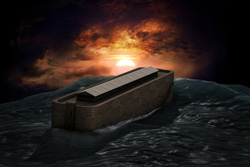Preserving the future of cultural heritage
Science has acknowledged that climate change is an inevitable reality that must be addressed to minimise its impact with respect to various issues. One of these is cultural heritage in terms of historical buildings and landmarks which could be affected by increased rain, flooding, drought or other changing climatic conditions. The EU-funded project 'Global climate change impact on built heritage and cultural landscapes' (NOAHS ARK) aimed to assess the risk of buildings and monuments in various ways. It wanted to outline the climatic parameters that affect historical buildings and predict the effects for the next 100 years based on scientific evidence. The project sought to outline mitigation strategies for sites, monuments and specific materials that were under risk. NOAHS ARK worked diligently to create a network of tools and a database of information for stakeholders to evaluate threats, run different scenarios and predict the effectiveness of various strategies. It also established an advisory panel to prepare recommendations and guidelines for authorities and policymakers to tackle the effects of different weather phenomena. The guidelines covered four themes related to rainwater and drainage infrastructure, effects on structures, indoor/outdoor interaction, and effects on building materials. They have already proved instrumental in enabling stakeholders, policymakers and implicated organisations to consider climatic impact on Europe's heritage. Another important result of the project was the preparation of maps that outlined areas with increased risk, where deterioration of buildings was most likely to take place. This vulnerability atlas included important information related to cultural heritage and meteorological risks. Project results were disseminated through international conferences, meetings, workshops, seminars and academic courses. They were also published on the project's website in an effort to reach stakeholders and raise public awareness on the subject. These activities are a step in the right direction to protect not only Europe's heritage but also that of the world at large.







